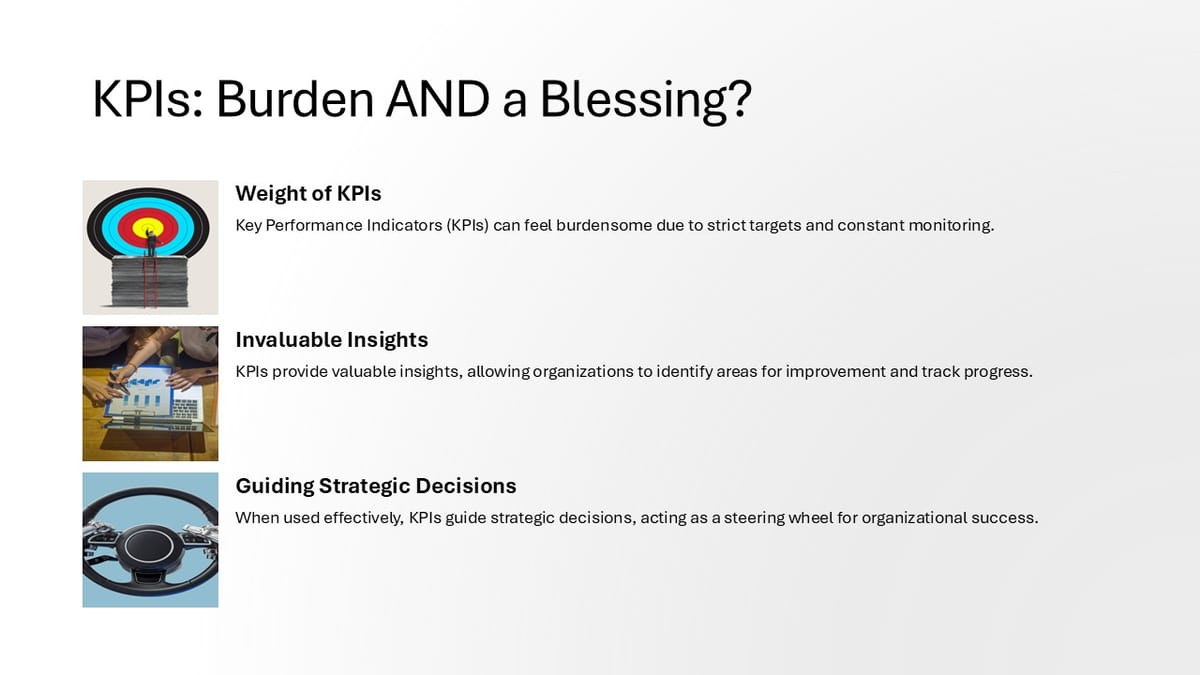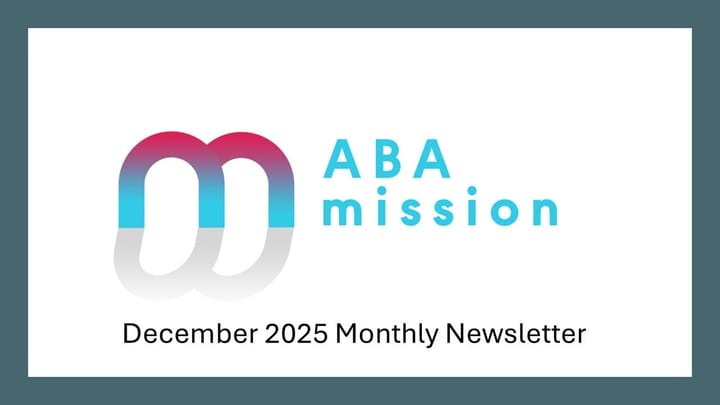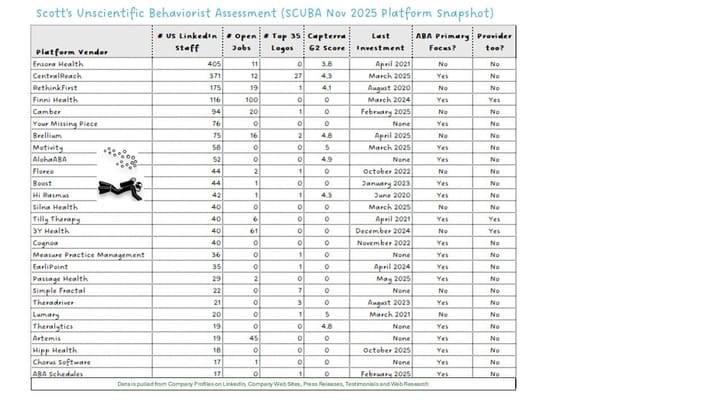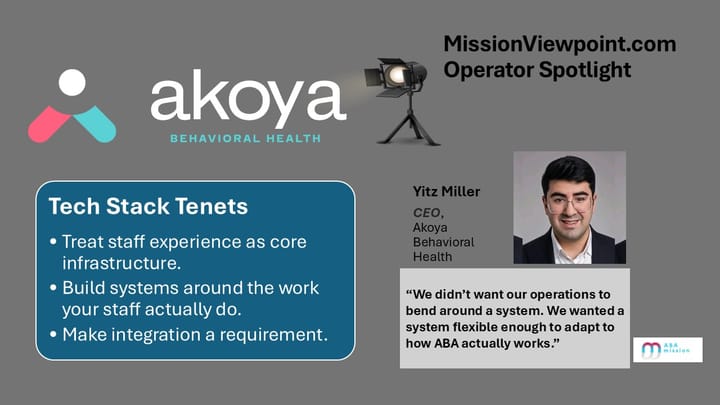From Anxiety to Action: Building KPI Decks That Scale with Your ABA Organization

If you’ve ever been asked to prepare a KPI deck for your board or executive team, you know the feeling: a mix of pressure, vulnerability, and uncertainty. Even if your operations are solid, there’s something about putting numbers on a slide that invites scrutiny — especially when those numbers don’t tell the full story.
But here’s the good news: building a meaningful, scalable KPI deck doesn’t have to be a panic-inducing exercise. In fact, if you’ve got a reasonably well-configured practice management platform (and a little technical support), you already have a solid starting point.
Start Simple: What Your Practice Management System Can (and Can’t) Do
Most modern ABA practice management systems — including CentralReach, Rethink, Lumary, and others — include some baked-in KPI reporting. Things like:
- Billable hours per technician
- Authorization utilization
- Cancel/no-show rates
- Claims aging
If you're a small or mid-sized provider, this may be enough — for now. CentralReach users, in particular, can get more sophisticated reporting if they license the Advanced Business Intelligence (ABI) module. ABI unlocks broader data access, but still requires effort to make it actionable.
The reality is: most PM systems weren’t designed to answer every operational or strategic question. They often stop at clinical and billing KPIs — but the boardroom wants more.
The Next Step: Integrating Your Operational Universe
If you're serious about scaling or improving operational oversight, you’ll eventually need to move beyond canned dashboards. That means pulling data into a dedicated, provider-managed environment — typically a SQL-based warehouse or data lake — where you can merge data from across your enterprise.
Here are 5 high-value KPI areas that go beyond your PM system:
1. Hiring and Staffing Pipeline
Track the full lifecycle from application to billable care delivery:
- Days from job post to hire
- Time to onboard and credential
- Early attrition
- % of hires still in the field at 30/60/90 days
Data Sources: Applicant Tracking Systems, credentialing tools, training platforms, HRIS, payroll
2. New Client Onboarding
Get ahead of client satisfaction and payer compliance:
- Days from intake form to first scheduled session
- Percentage of inquiries that convert to clients
- Reasons for lost referrals
Data Sources: CRM, PM intake logs, scheduling tools
3. Financial and Operational Forecasting
Standard KPIs are helpful, but trendlines are gold:
- Forecasted vs. actual billable hours
- Staff productivity by location or supervisor
- Revenue by service type and payor
Data Sources: PM system, payroll, accounting systems
4. Compliance & Labor Law Monitoring
Especially critical in states with strict wage/hour laws:
- Breaks taken vs. breaks scheduled
- Drive time compensation monitoring
- Real-time exception handling
Data Sources: Timekeeping, scheduling, PM logs, sometimes even GPS tools
5. Retention and Staff Experience
A leading indicator of stability:
- Supervisory contact frequency
- Credentialing status & deadlines
- Sentiment scores from surveys or even email metadata
Data Sources: LMS, credentialing systems, Slack/Email (via sentiment analysis), HRIS
Why CentralReach Users Should Pay Attention
If you're using CentralReach (as most of the largest ABA providers do), your best bet is to invest in your own hosted database, even if you license ABI. CR is powerful, but it doesn’t keep longitudinal history in a tidy format — and tags, labels, and location setups tend to proliferate quickly in most instances. You’ll want to define your own logic, track changes over time, and supplement it with non-CR data sources.
Even for non-CR platforms, the same rule applies: You need control of your data. And if you’re hoping to make cross-system connections (e.g., onboarding delays that correlate with increased cancels), it’s almost always better to extract and manage the data yourself.
Building Your Muscle: Tools, Team, and Tolerance
Once you get in the rhythm of building KPI decks, you'll find the appetite for data is never-ending. Leadership will always want one more view, one more filter, one more benchmark.
To keep up, you'll need:
- A data-savvy team with ETL, database management, and visualization skills
- A reporting layer like Power BI, Tableau, or Domo
- The discipline to prioritize, and not chase every possible metric
And perhaps most importantly: accept that no data pipeline is perfect. You’ll need exception handling, error checks, and human oversight. But that’s a small price to pay for clarity.
From KPIs to Proactive Action
Once you’ve built your KPI foundation, the next leap is to act on what you see:
- Missed a staffing ratio benchmark? Auto-create a supervisor task.
- Intake timelines slipping? Trigger a process review.
- Breaks not logged consistently? Open a ticket to retrain schedulers.
Automation here isn’t just possible — it’s powerful. KPI decks can become operational engines.
And Eventually… Agentic AI
Here’s where things get interesting. When your systems are connected and your KPIs are well-defined, you’re in a position to let AI act on your data.
Imagine this:
A newly hired technician hasn’t completed required training. Their credentialing is still pending. Supervisor contact has been low. Their email tone suggests mild frustration.
A system flags the risk, notifies the clinical director, and initiates a mentoring plan.
That’s the holy grail: not just tracking your business — but improving it in real time.
Final Thoughts
Yes, KPI decks can be stressful. But they don’t have to be. Think of them as your company’s dashboard — and you’re the driver.
Start with the data you have. Build on it. Bring in new systems over time. And when you’re ready, go from reactive reporting to proactive decision-making.
And remember: the goal isn’t just to satisfy the board. It’s to run a better business.



